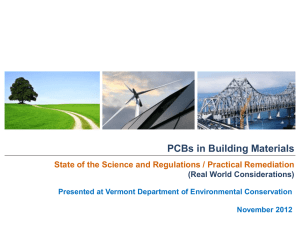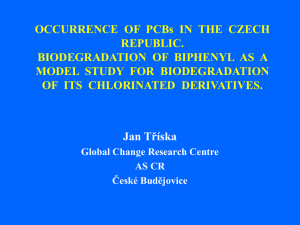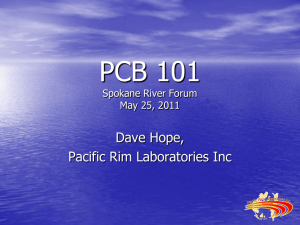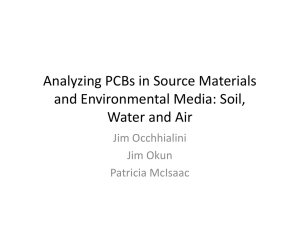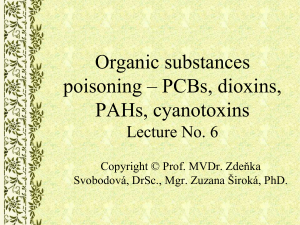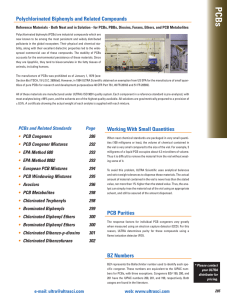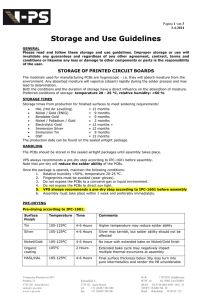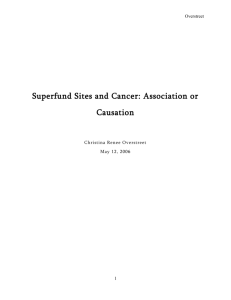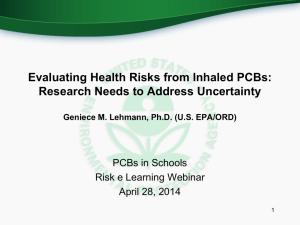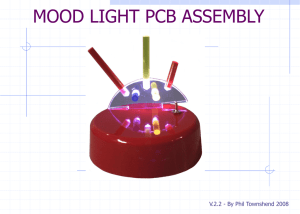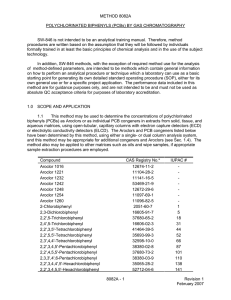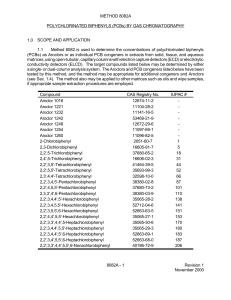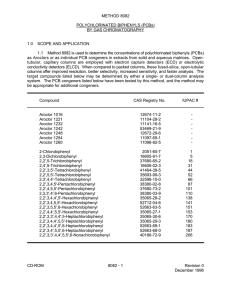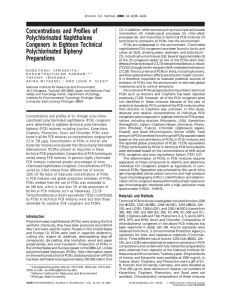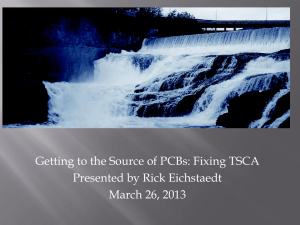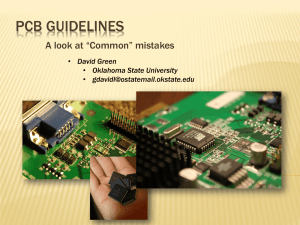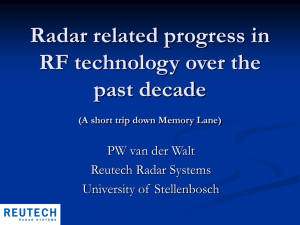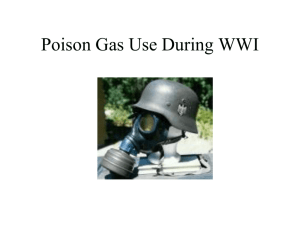Aroclor 1242 - CLU-IN
advertisement
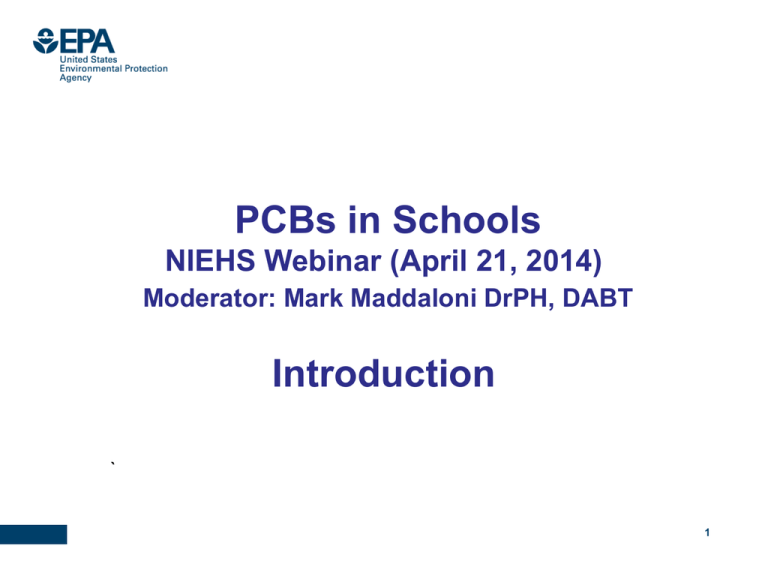
PCBs in Schools NIEHS Webinar (April 21, 2014) Moderator: Mark Maddaloni DrPH, DABT Introduction ` 1 Polychlorinated Biphenyls (PCBs) 209 possible PCB congeners • PCBs are comprised of many similar semi-volatile organic chemicals called “congeners” PCB 1 PCB 101 PCB 209 Common Aroclors Aroclor 1221 Aroclor 1232 Aroclor 1016 Aroclor 1242 Aroclor 1248 Aroclor 1254 Aroclor 1260 Aroclor 1262 Chlorine Weight % 21% 32% 41% 42% 48% 54% 60% 62% Number of Congeners 60+ 90+ 70+ 90+ 95+ 95+ 90+ 90+ • PCBs were manufactured in the U.S. as mixtures of congeners from approx.1929 to 1977 • “Aroclor” mixtures had the highest U.S. production 2 PCB Congeners in Aroclor Mixtures Aroclor 1242 -Less chlorine - Higher VP • >90 PCB congeners in these Aroclor mixtures • Aroclor 1242 (or similar Aroclor 1016) often found in light ballast capacitors Aroclor 1254 - More chlorine - Lower VP • Aroclor 1254 often found in caulk • Differences in amount of chlorine and vapor pressures 3 PCB Properties • Electrical insulation • Flame-resistance • Plasticizer • Chemical stability • Durability Useful for many applications • Persistent in the environment • Can vaporize and migrate • Persistent in people • Toxic effects Implications for human exposure 4 PCBs in School Buildings Possible Uses/Sources For schools built or renovated from about 1950 to 1979 (potentially >50% of U.S. public school buildings) Could be or have been in buildings Have been found in schools • Motor and hydraulic oil • Fluorescent light ballasts • Electrical device capacitors • Caulk • Adhesives and tapes • Window glazing • Carbonless copy paper • Joint sealant • Paints, coatings and inks • Ceiling tile coatings • Floor finish • Spray-on fireproofing material • Microscope oil • Paints 5 Sentinel School • Brief history of P.S. 199 and events leading to the environmental assessment of PCBs: • P.S. 199 – Elementary (K-6) – Age (1963) – Enrollment (880) – Location (UWS) • How it got on the radar screen – Herrick (2004, EHP Journal) • Study of 24 buildings in Boston area • Samples of exterior caulk • 13 contained PCBs > 50 ppm (70 – 36,200 ppm; mean 15,600 ppm) – 2005 - Concerned parent in NYC suburb (school window replacement in 2003) • Obtained exterior caulk sample (38,000 ppm) • Reached out to Daily News – 2008 - Caught attention of P.S. 199 (window replacement occurring) • Caulk samples obtained → high PCB concentrations (> 100,000 ppm) • The rest is history Indoor air sampling at P.S. 199 revealed indoor PCB concentrations orders of magnitude above urban ambient air background (<1 – 10 ng/m3) ( ATSDR, 2000) Sample Date Before HEPA Filtration After HEPA Filtration Nighttime 8/23/08 Sample Location Unit Cafeteria Daytime Before School Opening No Ventilation After School Opening Daytime 8/27/08 8/26/08 10/1/2008 1/19/2009 5/9/2009 Jul-2010 ng/m3 ng/m3 ng/m3 ng/m3 ng/m3 ng/m3 ng/m3 230 342 224 67 <53 596 - - - 140 70 689 - - - 81 201 138 67 714 - Classroom 308 502 Classroom 318 Classroom 320 No Ventilation 8/26/08 Classroom 202 Classroom 316 No Ventilation ng/m3 Classroom 116 Classroom 118 After Ventilation - - 1,444 - - 323 310 Sample Void(1) 794 578 495 529 253 186 409 - - 367 251 162 838 - 611 346 207 110 687 305 177 - 242 325 - 1,347 <49 <48 Sample Void (5) ND Classroom 328 Gymnasium 402 565 550 Outdoor Ambient (east of school) <50 <50 <50 - 942 849 Stairwell, Main Entrance Second Floor Landing 545 Third Floor North Corridor (First) ND Third Floor North Corridor (Second) 714
